Bolt Action Campaign Mariana & Palau Islands
A bit of catching up to do. While Bolt Action returns to D-Day with the current and next campaign supplement, we have to catch up and revisit the pacific with Bolt Action Campaign Mariana & Palau Islands.
For those of you, not familiar with the pacific campaign, a brief intro on the campaign might come in handy. We have had releases covering the (South) East Asian conflict for Bolt Action with Empires in Flames and New Guinea. And with Mariana & Palau, the US Forces, especially the Marines are moved into focus, in their battles against the Japanese. At 160 pages it doesn't set a new record in thickness, but is still broad and covering a lot of ground for the campaign. Pricing stays with the usual price band of 20 GBP or 30 USD (about 25 EUR). And as often with the Bolt Action / Osprey books, we had an early cover (left) and a changed final cover of the supplement (right), replacing the US Marine with an IJA soldier.
This campaign supplement was written by Mark Gallear, and it is his first work for Bolt Action. Unfortunately, I haven't found any more information on the author to share with you. Warlord changed the way they add special miniatures to the books due to some streamlining processes. But this comes with a pre-order bonus. It is a US Marine with a rather wild looking "Devil Dog" on his lash. This is a word play on one of the nick names the US Marine forces had during World War one and two, Devil Dogs.
What is it about?
Operation Forager, as the Mariana and Palau Islands campaign was also called, was an offensive launched by the United States to recapture the Philippines and provide by this a base for the further operations in the pacific. In this book the battles of Saipan, Peleliu and Guam, along with further smaller conflicts / battles, are covered, providing information on the time frame between June until October/November 1944.
Similar how the other axis powers expanded their territory (at least temporarily), Imperial Japan occupied large - partially coastal - areas in the south east Pacific. Thailand, Philippines, parts of New Guinea and Borneo were under Japanese control and creating a direct threat for the allies, as the eastern border of USSR or northern coast of Australia was in direct contact to the occupied zone. And as Australia was supporting the Commonwealth forces in the European and North African Theatre, as well as the Soviet Union fighting the Germans on the East Front, reducing the stress and potential risk on supply lines and reinforcements was an important factor, avoiding a full on two-front war for many nations. Beside that, the Japanese were the only axis power creating a direct threat to the Americans (if you don't count the u-boot packs in the Atlantic) to their home ground.
This campaign supplement covers rules for the operations and battles that you might know especially from The Pacific, highlighting some battles widely unknown to Western Europeans. The United States mobilized a large invasion force, that would recreate a Blitzkrieg like series of attacks on the Japanese held islands, among them the Battle of Peleliu, one of the bloodiest battles of the US forces, especially Marines. In June and July 1944, the US forces were able to execute landings on Saipan, Guam and Tinian, with the concluding securing of the islands in July and August of the same year, making it possible for the US to construct airfields that would allow bombing missions against the Japanese mainland, including the atomic bombings of Hiroshima and Nagasaki.
First Impression
I don't need to go into detail in the overall production quality of the Bolt Action books, as that is something the combined efforts of Warlord Games and Osprey Games do in a great way. But with this book, there is something that I missed often with these campaign supplements - it is maps. And they did a proper job on these, especially for the Western Europeans, that don't have a direct link to the battle in the pacific, this adds some value to this book. To be honest, this strategic movements and tying the battles into the overall conflict is something, a lot of the Flames of War books cover a bit better compared to the Bolt Action books. But that is most likely due to the difference in size of the battles (platoons vs. companies) covered by the rule systems.
Each scenario in this book is one of four types, Beach Landing, Counter-Attack, Advance and Strongpoint Assault, along with a basic victory points system for each of them. As the island hoping were kind of repetitive actions, this is not an issue. Each chapter covers one of the four battles (detailed listing below). Depending on the size of the island, after the landing the further operation to secure it, differed a bit in effort, as dug in Japanese fighters had to be defeated or strategic locations (airfields, crossroads, harbours) had to be cleared. And as the area differed by far from the theatres of war in Western Europe or North Africa, as did the tactics of the enemy for the US Americans, both sides have access to a lot of new units for their army lists. For example the Imperial Japanese Army has now an Engineer Squad, who fortified the defense locations, along with the support of naval militias and units that were born out of necessity, like lone snipers, night infiltrators for counter attacks / raids on US American bridgeheads, and heavier gear like 80mm coastal guns or the Su-Ki amphibious truck (the IJA variant of a DUKW). On the other side the US American have now more specialized assault units for the pacific war, for US Marines and US Infantry, along with veterans and a LVT-4. As mentioned above, the island hopping required an entirely different approach than other battles, so a lot of field conversions were made, like improvised side armours (like Schürzen but for allied tanks) or flamethrowers for M3A1 Light Tanks and M4A2 Shermans).
As for theatre selectors, there are 9 in total, covering Saipan, Guam and Palau, each time covering the US Marines, the US Army and Imperial Japanese Army and Navy. As you'd expect, as these are regular mobile forces, build around infantry and supported with weapon teams, incl. transport options for the infantry units. It is a bit sad that the Heroes of the Pacific, as the Legends are called in this supplement, are spread across the book and not part of the new units or combined in a chapter of their own as they did in some of the more recent books. There are the named legends for the US Americans, Private Lee "Cpt Marvel" Marvin, Lt. Col. William Joseph O'Brien and Captain Everett P. Pope, as well as two for the IJA, Lt. General Hideyoshi Obata, (Commander of the 31st Army) and Lt. Col. Nakagawa Kunio.
And as Stalingrad got their rules to cover the dire situation of the city fights, Operation Forager receives theirs to bring out the battle in the pacific. Some are more cineastic, as the special rules for ammo cache, which can explode as you've seen in multiple action movies, a few that are already around like amphibious assault or dug in. But they extended and added new ones, like exhaustion, which reduces units and their effectiveness due to the ongoing fights. A very interesting and from my point of view fitting aspect of dug ins and fortifications, as the Japanese created some rather unique bunkers and underground tunnels, which adds a certain uncertainty and terror to the games. And on top of that the weather, which is covered with mud, monsoon season and tropical hazards, altering the possibility of movement along with a less view range. So, in combination with trenches and lots of trees, this opens up the chance for intense close quarter battles.
There are a total of 21 scenarios in Campaign Mariana & Palau Islands, spread across five chapters, of which Saipan, Guam and Peleliu are the major acts, with Tinian and Angaur only covering a scenario each.
- Scenario 1: Battle of Saipan - D-Day in Saipan
- Scenario 2: Battle of Saipan - Japanese Counter-attack
- Scenario 3: Battle of Saipan - Fina Susu Ridge
- Scenario 4: Battle of Saipan - Armoured Banzai
- Scenario 5: Battle of Saipan - Death Valley
- Scenario 6: Battle of Saipan - Hara-kiri Gulch
- Scenario 7: Battle of Saipan - D-Day in Ichioku Gyokusai
- Scenario 8: Battle of Guam - Landing Apart
- Scenario 9: Battle of Guam - The Counter-Attack
- Scenario 10: Battle of Guam - The Assault on Orote Peninsulae
- Scenario 11: Battle of Guam - Slow Progress
- Scenario 12: Battle of Guam - The Final Attack, Yigo and Mount Santa Rosa
- Scenario 13: Battle of Tinian - Battle by Starlight
- Scenario 14: Battle of Peleliu - Bloody Beaches
- Scenario 15: Battle of Peleliu - Man againts Tank
- Scenario 16: Battle of Peleliu - The Attack Across Peleliu Airfield
- Scenario 17: Battle of Peleliu - Bloody Nose Ridge
- Scenario 18: Battle of Peleliu - Not a Good Tactical Situation
- Scenario 19: Battle of Peleliu - The 2,000 yard stare
- Scenario 20: Battle of Peleliu - Last Man Standing
- Scenario 21: Battle of Angaur - The Bowl
How does Mariana & Palau Islands play?
Similar to Empire in Flames, this isn't about open battles with a lot of heavy gear to have around. With the four different types of scenarios Beach Landing, Counter-Attack, Advance and Strongpoint Assault, the overall theme is set. As the Japanese don't have a large motor pool of heavier armoured vehicles anyway, the US players will most likely go for something that is flexible enough to take out infantry and smaller, specialized units.
And beside the beach landings, or those games where you can actually bring an (armoured) transport to use, I wouldn't expect players to go for full units, but rather multiple mid-sized ones, to be able to flexibly interact in a hostile environment. With mud or monsoon season sight will drop and in case your unit is stuck or not able to see, you want a few others to be able to hand out some damage. With US players who already participated in D-Day missions, they probably have some experience with the landings, yet the island hoping differs a bit from the Atlantic wall. So very much like the New Guinea campaign supplement, this book invites to go heavy on the terrain. Get yourself some palms and jungle terrain, as you will want to use it. Of course, in difference to New Guinea, this is more a broad assault, and less commando operation as the British / Commonwealth forces did.
What's next?
While finishing this review, the next supplement was already released, covering the D-Day campaign for the British and Canadian sectors and the announcement / pre-order for the campaign supplement after that went live - covering the US sectors of the same campaign.
The first book was renamed, originally advertised as D-Day: Anglo-Canadian Sector, to go into further detail of Operation Overlord, providing more details on the Commonwealth forces at the beaches Sword, Juno and Gold. The book on the US sectors came a bit as a surprise, from the first look, as the main book already covered Utah and parts of Omaha beach. But in the introduction of Operation Overlord it was already announced, that the whole conflict would be spread across three books, so leaving the part from the road to Carentan to the assault on Fort Montbarey for the last book.
There was a third campaign supplement, covering Burma, planed for Bolt Action. This was dropped from the current release schedule. I am not sure if this is simply postponed or cancelled.
Conclusion
This is a great addition to the New Guinea book and brings the detail and affection towards the US forces in the pacific, they deserve from a gamers point of view. It is no surprise, that this book is properly researched and produced on a high level. You get clear layout and a newcomer friendly introduction for playing Bolt Action in the Pacific.
For an IJA player, this is endgame, this is Japanese Götterdämmerung, so you'll probably want this one in your collection. For Americans it surely depends on how your army is themed, it certainly isn't as niche as some other projects, but it creates some alterations and variety from the regular US Paratroopers or Normandy forces. If you're into US Marines, this is a no brainer and set.
As Empire in Flames is part of the first edition and just not comparable in scale or comprehensiveness to this new supplement, you can certainly own both but from a today's point of view, Mariana and Palau is the more detailed and current approach on the battles in the pacific. Empire in Flames only covered the Island Hoping in their last two scenarios, this book is entirely dedicated to the campaign. And from a collector's point of view, depending if you're more interested in the British or Americans, it's between Guinea and this, or both if you go for completion. But whatever your motivation is, it is certainly worth the 20 GBP.
For further information on the conflict, there are multiple Osprey books covering it, for example BO8 - US Marine Corps Pacific Theater of Operations 1944 - 45 or CAM 110 - Peleliu 1944, and of course try to watch the Pacific (keep in mind, the physical blu rays are cheaper than the stream ...).
Bolt Action is a brand of Warlord Games.
The reviewed product item was provided by the manufacturer.
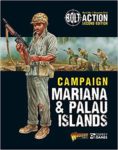
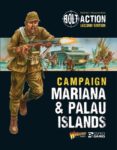
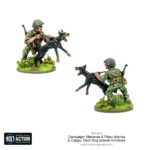
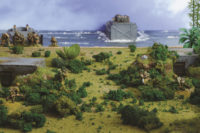
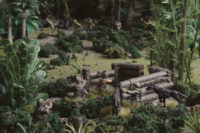
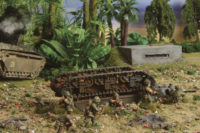
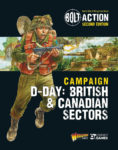
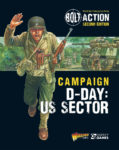












Leave a Reply